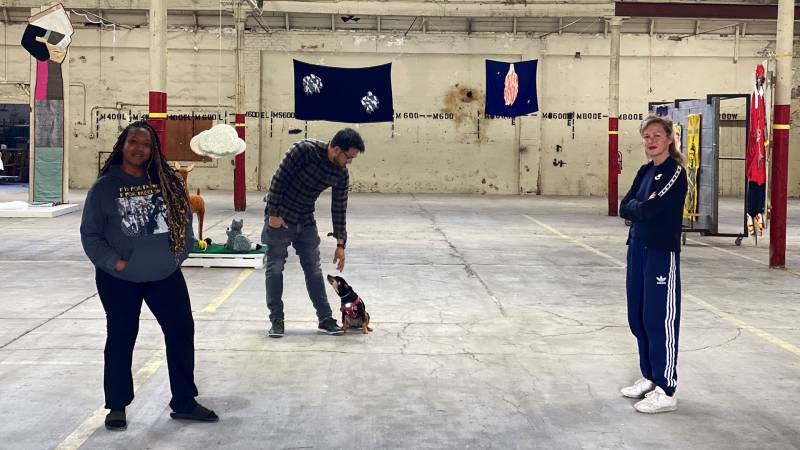We all know the story: artists move into a low-income area in search of cheap space, set up shop and eventually attract wealthier interests that push out long-term residents. But in East Oakland, a coalition of artists and educators is trying to rewrite the narrative by doing something improbable—making a new development serve the community.
The new space is a former cotton mill slated for redevelopment. Once the project is completed, the entire 200,000-square-foot Jingletown building, not far from the Fifth Avenue Marina, will become a new arts and culture complex called The Loom (2150 Livingston Street). It’s an ambitious project that promises solar power and a permaculture garden, spaces for classes and events, affordable artist studios, dining, retail, below-market-rate co-living spaces and even a hotel.
While the blueprints for most of those features are still being drawn up, an art space called Agency has already moved into the bare bones of the cavernous, brick warehouse. Agency is a collaboration among Rosalyn Nash of The People’s Conservatory, which provides arts education to underserved K-12 students; Assan Jethmal, an event producer with Endeavors Oakland and co-founder of Good Mother Gallery; and Natalia Ivanova of the nonprofit downtown art gallery ProArts.
Each player brings with them a wide-ranging network of artists and activists, many of whom are people of color making forward-thinking work and in need of affordable places to create, gather and perform. And their goal isn’t just to get a symbolic nod to diversity and inclusion from the developer, but to give the community direct access and influence.
“What we’re bringing to the table is bringing folks who are boots on the ground, doing work with the community, creating the arts and culture of Oakland,” says Nash. “As the developers, they have the capital, they have the space. But we have the culture.”


